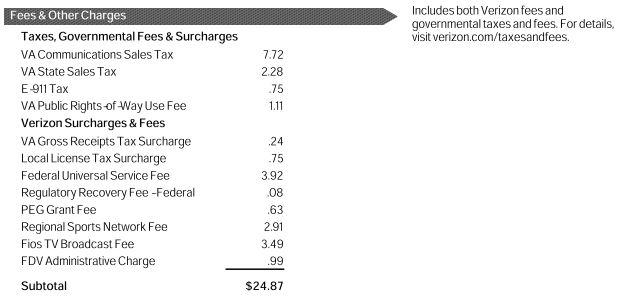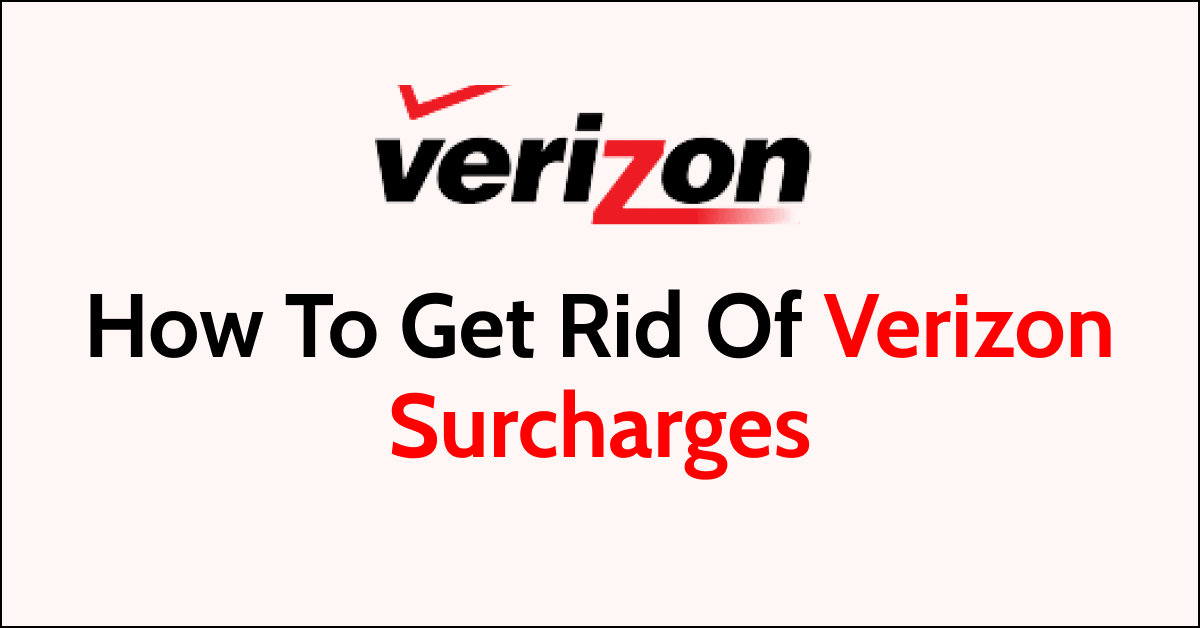Verizon, like many other telecommunications companies, adds surcharges to customers’ monthly bills.
These surcharges are fees that are not directly mandated by the government but are charged by Verizon to cover certain costs associated with providing services.
Understanding what these surcharges are, why they’re charged, and how to potentially reduce or eliminate them can help customers manage their phone bills more effectively.
In this blog, let’s see the possible ways to Get Rid Of Verizon Surcharges.
What Are The Verizon Surcharges?

Verizon surcharges are fees assessed on top of the base cost of your service plan.
They can include costs for Federal Universal Service, regulatory charges, administrative charges, and other Verizon Wireless charges.
These are separate from standard taxes and government-imposed fees, and they can vary by service area and change over time.
Why Are The Verizon Surcharges Charged?
Verizon surcharges are intended to help the company cover various costs, including:
- Maintenance and Upgrades: Maintaining and improving the network infrastructure to provide reliable service.
- Regulatory Compliance: Complying with regulations and contributing to government programs like the Federal Universal Service Fund, which helps make phone service affordable and available to all Americans.
- Administrative Costs: Covering the administrative costs associated with billing, customer service, and other operational functions.
How To Get Rid Of Verizon Surcharges?
However, there are a few strategies that might help reduce the overall bill:
Review Your Bill: Understand the surcharges on your bill by reviewing the detailed billing statement. This can help you identify any fees that seem incorrect or unusually high.
For example, Susan noticed a mysterious “$15 Regulatory Charge” on her last Verizon bill. After reviewing the itemized charges, she determined this fee was incorrectly applied in error. She contacted Verizon customer service to dispute the charge.
Negotiate Your Plan: Contact Verizon’s customer service to discuss your bill and ask about any possible ways to lower your costs. While surcharges themselves may not be negotiable, you might be able to change your plan or get a discount on other services.
For instance, John was unhappy with the various taxes and surcharges added to his bill each month. When he called Verizon, they offered him a $10/month plan discount for 12 months to keep him as a loyal customer.
Opt for a Different Plan: If the surcharges on your current plan are too high, consider switching to a different Verizon plan or another carrier with lower fees.
For example, Michael’s surcharges on his Verizon unlimited plan were $25/month. He switched to Visible, Verizon’s prepaid brand, and now pays only $5 in total monthly taxes.
Use Customer Retentions: If you’re considering leaving Verizon due to high surcharges, speaking with the retention department might result in offers to keep you as a customer, potentially reducing your overall bill.
Promotions and Discounts: Keep an eye out for promotions or discounts that may offset the surcharges. Verizon occasionally offers deals that can lower your monthly cost.
Verizon frequently runs limited-time promotions that can help offset the impact of surcharges on your bill. Be on the lookout for these types of deals:
- New customer offers: Verizon commonly advertises discounts or bill credits for new customers who switch from a competitor. You may get up to $250 credited to your account over 24-36 months.
- Loyalty promotions: Even long-time customers can save when Verizon runs retention discounts. You may qualify for $5-10/month off for 12-24 months by calling to ask about offers for loyal customers.
- Phone trade-in deals: Upgrade your device and trade in an older model to save up to $800, depending on the promotion. Verizon applies the trade-in value as monthly bill credits.
- Accessory discounts: Purchase a smartwatch, tablet, hotspot or other accessory on your Verizon account and the carrier may credit your line $5-10/month for each additional device activated.
It pays to regularly check Verizon’s website or call in to ask about current promotions. Combining discounts can significantly offset surcharges each month.
Join a Family Plan or Group: Surcharges are often per line, so joining a family plan or a group can spread out the cost of surcharges among multiple users, reducing the impact on your bill.
Sharing data and talk plans across multiple lines provides significant savings potential:
- Family plans offer 3+ lines for $25-30/line rather than $40-50 individually. For a family of 4 that’s $100/month saved.
- Business plans charge $30-40/line versus $50-60 retail rates. A group of 5 friends on a business plan would pool costs and each pay $30/month rather than $50 individually.
- Multi-line discounts also apply to surcharges. Where a single line may pay $25/month in regulatory fees, 3 lines on a family plan pay a total of $50-75/month in combined surcharges.
Use auto-pay and paperless billing discounts: Signing up for automatic payments and electronic statements can provide a small monthly discount, helping to offset regulatory charges and other fees.
Look for refer-a-friend programs: where existing customers receive credits for each new line added. Verizon sometimes offers $10/month or more in bill credits through these types of promotions.
With some effort, it’s possible to minimize and potentially even eliminate surcharges through strategic plan changes and account management techniques.
